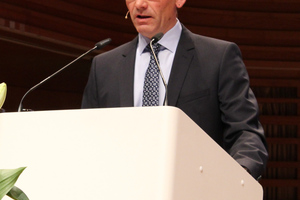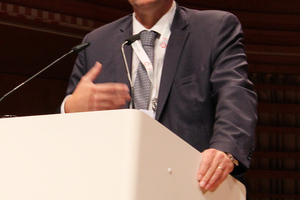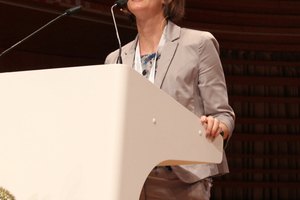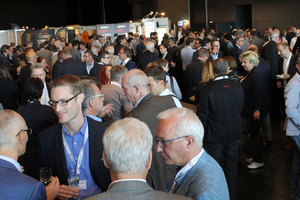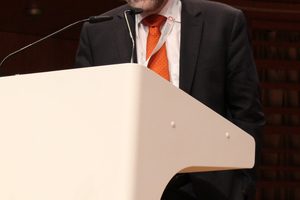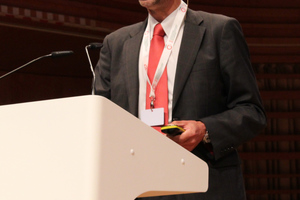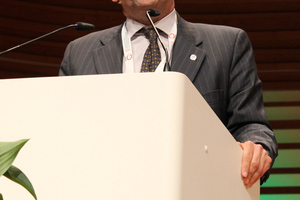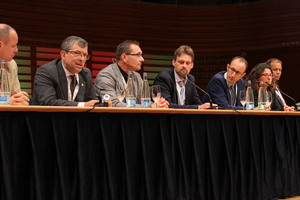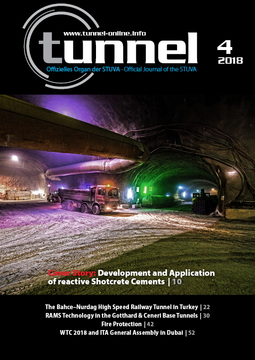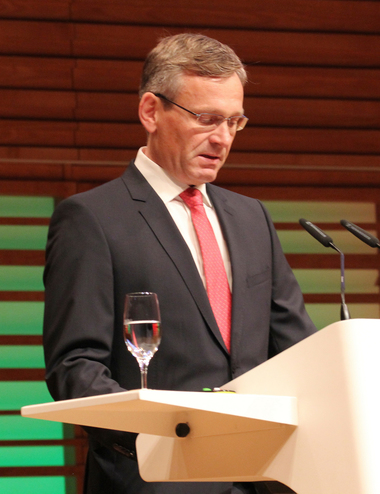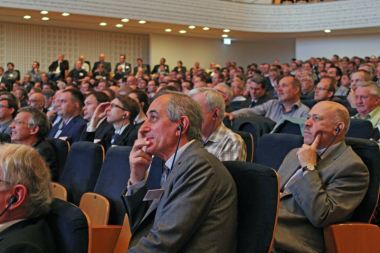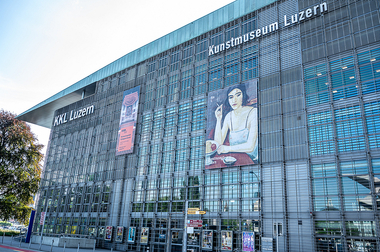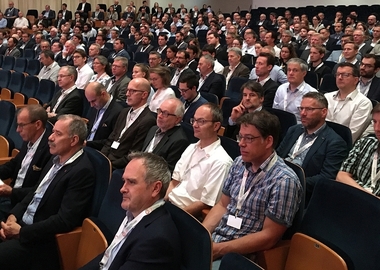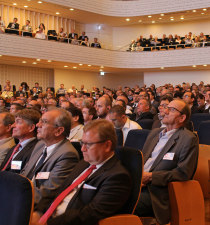Swiss Tunnel Congress 2018
From June 13 to 15, 2018, the Swiss Tunnelling Society (STS) staged the 17th Swiss Tunnel Congress in the concert hall at the Lucerne Culture and Congress Centre. Around 700 visitors took part in the lecture programme of the STC. The Swiss Tunnel Colloquium for students, young engineers and technicians on the first congress day attracted 380 participants. The colloquium with the title “Waterproofing and Drainage in Underground Construction” was organized in collaboration with the STS young members (STSym), and according to Stefan Maurhofer, President of the STS, it featured “excellent lectures on the topics of waterproofing, drainage, dewatering and scale deposits”. The congress on June 14 presented comprehensive specialist presentations of international and Swiss tunneling projects. The introductory presentation “High Density of Underground Constructions” was given by the Director of the Swiss Federal Roads Office (FEDRO), Dipl.-Ing. ETH Jürg Röthlisberger.
Traffic Infrastructure in Switzerland: Challenges for the Future
Röthlisberger states that the construction of traffic infrastructure in Switzerland is already at the edge of its feasible limits. Politicians, companies, researches and the authorities now need to play their part in laying the groundwork for a sustainable future development, because the population and the need for mobility are increasing and with it the amount of traffic on the roads and railways. Furthermore, the aspiration for landscapes that are as unspoilt as possible and urban areas with a reduced amount of traffic will increase as well. The scope for additional infrastructure in terms of roads and railways is thus finite and the costs are threatening to explode.
A targeted expansion of the road and rail infrastructure network is required while existing roads and railways have to be used with significantly greater efficiency. Those involved in transport route construction and operation, as well as researchers and educators face the major challenge of developing innovative solutions that will ensure increasingly complex, yet affordable future infrastructures projects.
According to Röthlisberger, the task of FEDRO is to put the legal and technical prerequisites in place that will allow for the expected potentials to emerge. In this connection, the role of industry and researchers will be to present innovations at every level imaginable, in order to ultimately reduce the costs for construction, running and maintenance of the traffic infrastructures and, in particular, the costs of tunnel construction.
Tunnelling in Switzerland and international Projects
Guido Biaggio and Valentina Kumpusch from the Swiss Federal Roads Office (FEDRO) provided a short overview of the planned construction of the Gotthard Road Tunnel’s second tube, featuring a length of 16.9 km. They explained the investigation of the fault zones, outlined the excavation concept for piercing these zones and addressed both material management and the reuse of the excavation material. When the project is completed, both tubes will feature single-lane operation with one standard lane and one service lane in each direction. This ensures compliance with the constitutional clauses relating to Alpine protection, which also preclude any attempt to increase the capacity of transit roads in the Alpine regions. Once the construction period of around eight years has been completed, the second Gotthard Road Tunnel tube will be opened. This is estimated to take place in 2028.
Johann Herdina (Tiroler Wasserkraft AG) presented his paper about the GKI Hydroelectric power plant project on the river Inn in the border region between Switzerland and Austria – and the technical and contractual challenges of building the largest hydroelectric run off river power station in the Alps with a 23 km headrace tunnel and a dam construction site directly on the border. As the TBM excavation of the headrace tunnel made insufficient progress due to a variety of causes and the contractor had considerable difficulties coping with the conditions, the contract for the construction of the headrace was terminated by mutual agreement at the turn of the year 2016/17. All of the machines and the equipment became the property of the GKI and were given to a new consortium to continue the work as part of an alliance agreement.
The construction sections for the headrace and for the weir and intake have been delayed by about two years, and the originally planned date for the start of operations in April 2018 is now expected to be early 2020. Apart from the lost production of electricity due to the delay, the manufacturing costs of originally 461 million euros have grown to what is currently 534 million euros.
Further papers of the STC programme, covering 14 different projects in total, dealt with the further construction of the 34.6 km long Lötschberg Base Tunnel in Switzerland, which has reached the limit of its capacity, with experience gained in the construction of the Metro Doha Green Line (Qatar) with the “Design-Build plus provisional sums” contract model and with the management of technical risks and environmentally friendly design at the Grand Paris Express project (France) by means of testing soil permeability reduction techniques and research into geothermal energy.
Moreover, findings from the Eppenberg Tunnel TBM drive were presented as well as experiences of tunnelling through loose rock and bedrock at the New Bözberg Twin-Track Tunnel and results from a TBM excavation test in an exploratory tunnel of the Moncenisio Base Tunnel on the Turin–Lyon railway line.
A complete insight into the wide range of topics at the 2018 STC can be obtained from the Proceedings, which contain complete versions of all the papers presented.

